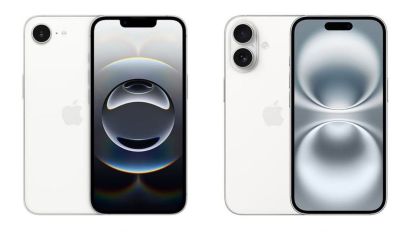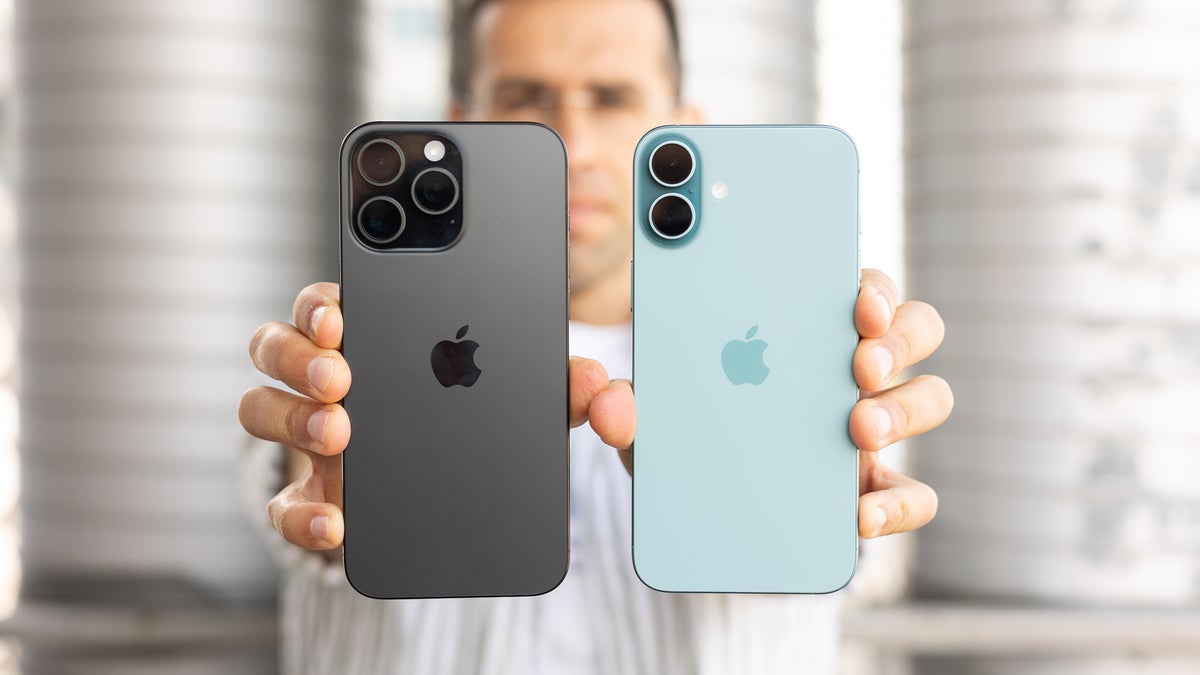Choosing your next iPhone can feel overwhelming, especially when you’re deciding between an older model like the iPhone 11 and the cutting-edge iPhone 16. You’re probably asking yourself, “Is upgrading worth it?
What am I really getting for my money? ” These are questions we all face when it’s time for a tech upgrade, and the answers aren’t always clear. In this side-by-side review, we’ll break it all down for you—features, performance, design, and value—so you can make the smartest choice for your needs.
Whether you’re holding onto your trusty iPhone 11 or thinking about jumping to the latest and greatest, this comparison will help you decide what’s truly worth your time and investment. Ready to find out which iPhone fits your life best? Keep reading—you don’t want to miss this.

Credit: indianexpress.com
Design And Build
The design and build of a smartphone often define its first impression. With the iPhone 11 and iPhone 16, the differences are striking. Apple has come a long way in refining its craftsmanship. Let’s take a closer look at how these two models compare in terms of aesthetics and durability.
iPhone 11: Classic Design With Rounded Edges
The iPhone 11 features a timeless design with aluminum edges and glass back. Its rounded corners provide a comfortable grip, making it easy to hold. The phone comes in vibrant colors like purple, green, and yellow, adding personality. Despite being sturdy, its glossy finish attracts fingerprints, requiring frequent cleaning.
iPhone 16: Sleek And Modern With Flat Edges
The iPhone 16 adopts a more futuristic approach with flat edges and titanium build. This design choice gives it a premium feel and improves durability. The phone is slimmer and lighter than the iPhone 11, making it more pocket-friendly. It also introduces muted tones like graphite and starlight, catering to a minimalist aesthetic.
Build Quality And Durability
Both models use durable materials, but the iPhone 16 offers better resistance. With its ceramic shield front and titanium frame, it withstands drops more effectively. The iPhone 11, while robust, is prone to scratches on its glass back. Water resistance has also improved, with the iPhone 16 surviving deeper submersions.
Ergonomics And Comfort
The iPhone 11’s rounded edges provide a more ergonomic feel in hand. On the other hand, the flat edges of the iPhone 16 can feel sharp during extended use. Yet, its lightweight design balances the experience for most users.
Performance And Features
The iPhone 11 and iPhone 16 might seem worlds apart, but their core promise remains the same: delivering a fast, seamless experience. However, the gap in performance and features tells a story of how far technology has progressed in just a few years. Let’s break it down so you can see what truly sets them apart.
Performance: Processing Power And Speed
The iPhone 11 runs on Apple’s A13 Bionic chip, which was a beast back in 2019. It handled everything from gaming to heavy multitasking without breaking a sweat. But in 2025, the A13 is starting to show its age, especially with demanding apps.
On the other hand, the iPhone 16 boasts the A19 Bionic chip, which is six generations ahead. This chip isn’t just faster—it’s smarter. It uses advanced AI to predict your needs, optimize battery usage, and deliver smoother performance even under pressure. For instance, apps open twice as fast, and rendering times for videos are cut in half.
If you value speed and efficiency, the iPhone 16 is the clear winner. But ask yourself: do you really need that much power for your daily tasks?
Features: What’s New And What’s Useful
The iPhone 11 brought Face ID, Night Mode, and a dual-camera system to the table. These features were groundbreaking at the time and are still sufficient for most users. The Night Mode, in particular, turned low-light photography into an art form.
The iPhone 16, however, takes it up several notches. Its quad-camera setup includes a dedicated astrophotography lens. Imagine capturing the Milky Way with crystal-clear detail—something the iPhone 11 simply can’t do. Additionally, the Dynamic Island feature, introduced in earlier models, has evolved into a fully interactive hub, replacing the need for some widgets entirely.
Another standout is the under-display Face ID. It’s invisible and works flawlessly, even when your hands are full or you’re wearing sunglasses. Is it a must-have? Maybe not, but it’s undeniably cool.
Battery Life: A Real-life Comparison
The iPhone 11 offers decent battery life—enough to last you a full day with moderate use. But streaming, gaming, or GPS drains it quickly. You might find yourself scrambling for a charger by evening.
The iPhone 16, with its A19 chip and optimized software, delivers around 30% more battery life. That’s an extra four to five hours of screen time. Plus, it supports 50W fast charging, which gets you to 80% in just 20 minutes. If you’re always on the go, this feature can be a lifesaver.
Software: Old Meets New
While both phones support iOS updates, the iPhone 11 is nearing the end of its lifecycle. It may not get all the latest features, and performance could slow down with future updates. This could frustrate you if you rely on new apps or software tools.
The iPhone 16, of course, is built for iOS 19 and beyond. It’s future-proof for at least five years, meaning you’ll get the latest features, security updates, and app compatibility. Think about how long you plan to keep your phone—this could be a deciding factor.
So, where do you stand? Are you impressed by the cutting-edge features of the iPhone 16, or is the iPhone 11’s dependable performance enough for your needs? The answer depends on your priorities and how much you’re willing to invest in staying ahead of the curve.
Price And Value
The iPhone 16 promises advanced features, but how does it compare to the iPhone 11 in terms of price and value? This section dives into the cost differences and the practical benefits each device offers.
Comparative Pricing
The iPhone 11, released in 2019, was priced affordably for an Apple device. Starting at $699, it provided a balanced mix of performance and features. By contrast, the iPhone 16, launched in 2025, comes with a premium price tag. Its base model starts at $1,199, reflecting its advanced technology and design.
The price gap between the two models is significant. Buyers need to consider whether the additional cost of the iPhone 16 aligns with their needs and preferences.
Features Vs. Cost
The iPhone 16 boasts cutting-edge features, including advanced AI and 8K video recording. Its futuristic design and materials contribute to the higher price. The iPhone 11, though older, still handles daily tasks effectively. Its dual-camera system and A13 chip remain reliable for most users.
For those upgrading from older devices, the iPhone 16 offers more value. But if you’re budget-conscious, the iPhone 11 still delivers solid performance at a lower cost.
Long-term Investment
Investing in newer technology like the iPhone 16 ensures longevity. Apple tends to provide software updates for many years, keeping devices functional. The iPhone 11, while still supported, may face limitations in newer updates sooner.
Users seeking a device to last over five years should weigh these factors carefully. Spending more upfront on the iPhone 16 could save money in the long run.

Credit: indianexpress.com

Credit: www.phonearena.com
Frequently Asked Questions
Is An iPhone 11 Still Good In 2025?
Yes, the iPhone 11 is still good in 2025 for everyday tasks, social media, and moderate app usage. Its A13 Bionic chip remains reliable, and iOS updates keep it functional. The camera and battery performance may feel slightly outdated compared to newer models but still deliver decent results.
Is The iPhone 16 Worth It Over 11?
Yes, the iPhone 16 offers significant upgrades over the iPhone 11, including better performance, camera improvements, and longer battery life.
What’s The Best iPhone To Buy In 2025?
The best iPhone to buy in 2025 depends on your needs. Choose the latest model for cutting-edge features and performance.
Is It Worth Upgrading From iPhone 11 To 16e?
Upgrading from iPhone 11 to 16e is worth it for better performance, advanced features, improved camera, and longer software support.
What Are The Main Differences Between iPhone 11 And iPhone 16?
IPhone 16 has better camera, faster processor, and improved battery life compared to iPhone 11.
Conclusion
Choosing between the iPhone 11 and iPhone 16 depends on your needs. The iPhone 16 offers advanced features, better cameras, and faster performance. The iPhone 11, though older, remains reliable and budget-friendly. Consider your priorities—price, performance, or features. If you need modern tech, the iPhone 16 is a solid choice.
For basic tasks and savings, the iPhone 11 still delivers. Both models have strengths, catering to different user preferences. Evaluate what matters most to you before making a decision. Either way, Apple’s quality ensures a dependable smartphone experience.
